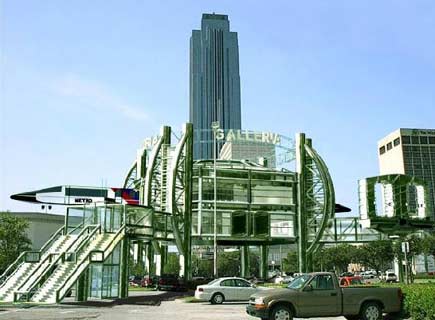Railway without rails
This type of train does not have wings as well as any type of wheel, nor does it run on magnetic padding. They run high above the ground, meters away. It is a revolution in train design, manufacture and operation.
It is remembered that at the beginning of the industrial revolution in England, the coal miner had to transport coal in wheelbarrows with wooden crates and wooden wheels. Work is heavy. Then someone came up with the way of lining up the wheel - the friction force was reduced, so the work was a bit softer. Gradually, the board was replaced with rails and wheelbarrow made of iron. Then the monorail was replaced by double rails and a wheeled wheelbarrow was replaced by a wagon with 4 wheels. Railway was born roughly like that.

For the past several centuries, people have been accustomed to the image of rail-mounted railroad tracks and the wheels attached to wagons that no one thought of could do the opposite: rails attached to wagons and wheels . . on the road. Recently, a group of American engineers thought about that "paradox" and the results were spectacular.
The name "Tubular Rail" of this project actually does not reflect the true nature of the problem, since the content of the project refers to a type of railway transport that is completely unnecessary. track.
Try to imagine, a very long wagon, rushing on rails at a height of 10-15 meters above the ground like in amusement parks. If you remove the rail, we have what Tubular Rail authors suggest. But then, does the train itself fly in the air? Not that. The bottom, ceiling and the sides of the wagon rest firmly against a concrete frame at the top of the pole. Vehicles must be made of super hard materials and have twice the distance between two adjacent concrete frames. The carriage has no wheels, because the wheels are mounted in concrete frames. Wheels move by electric motor, squeeze into wagon walls and "drag" wagons to come. On the wagon there is a remote control, which allows the driver to control the power of the wheel's electric motors to adjust the speed of the train as fast and as desired. It is convenient.

The advantage of this type of vehicle is the low construction cost, much lower than the construction of terrestrial railways, which almost do not occupy the ground area and do not have to dump high roads like ordinary railways. do not ruin the landscape while traveling in the city or through residential areas. Construction time is many times faster than normal railway construction on the ground. Each of the concrete pillars supporting the upper part occupies the land with only a medium stump and looks like a tree. The concrete frame above looks like a pretty little architecture, without losing sight of the city.
Technically, if the engine of one or two wheels in a concrete mold is damaged, it will almost certainly not affect the movement of the wagon. In addition, because the wagon does not have to load more wheels, it is possible to increase the useful load. The energy consumption of this type of vehicle is also significantly lower than that of conventional trains. Before mass adoption, the project authors were lobbying, seeking investment to build short routes in the state of Texas, serving travel from the big city to satellite towns.
- Why do I have to spread rails?
- Launched unmanned trains, no rails in China
- Solar rails in the UK
- Flying along the first elevated railway line is about to run
- Experience the first real elevated railway station in Vietnam
- The 'no rails' train runs in Chinese streets
- The first train and model station of Cat Linh - Ha Dong railway
- Photos: High-altitude railway train
- Switzerland launches the world's steepest railway
- India prepares to build the highest railway in the world
- What is the difference between the urban railway in Hanoi and Saigon?
- Pilatus - the world's steepest railway
 Daily use inventions come from universities
Daily use inventions come from universities Special weight loss device helps prevent appetite
Special weight loss device helps prevent appetite 8 inventors were killed by their own inventions
8 inventors were killed by their own inventions Iran invented a motor car powered by water
Iran invented a motor car powered by water